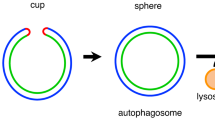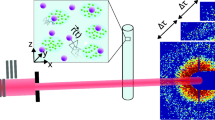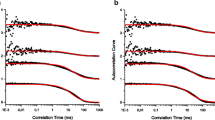Abstract
In this article, we propose a method for automated tracking and analysis of vesicle contours in video sequences acquired by phase contrast microscopy. The contour is determined in each frame of the selected video sequence by detecting the transition between the interior and exterior of the vesicle that is reflected in the image intensity gradients. The resulting contour points are represented in the polar coordinate system, i.e., with uniform angular sampling and with coordinates that originate from the vesicle center of mass, enabling the analysis of the vesicle shape and its membrane fluctuations. By analyzing artificial images with known ground-truth contours, the accuracy and precision of the proposed method was estimated to be 34.1 and 26.9 nm for image signal-to-noise ratio of 23 dB and pixel size of 35 nm, respectively. The proposed method was evaluated on quasi-spherical vesicles made up of different proportions of 1-Palmitoyl-2-Oleoyl-sn-Glycero-3-Phosphocholine (POPC) and cholesterol and exposed to different temperatures. The results show that the method is robust and efficient in terms of speed and quantitative description of vesicle fluctuations. The magnitude of vesicle membrane fluctuations increased with temperature, while the bending rigidity of the membrane was increasing for temperatures up to 20°C and decreasing for higher temperatures irrespective of the vesicle molecular structure.








Similar content being viewed by others
References
Ambriz-Colin F, Torres-Cisneros M, Avina-Cervantes J, Saavedra-Martinez J, Debeir O, Sanchez-Mondragon J (2006) Detection of biological cells in phase-contrast microscopy images. In: Gelbukh A, Reyes C (eds) Proceedings of the fifth mexican international conference on artificial intelligence, IEEE Computer Society Washington, USA, pp 68–77
Angelova M, Soléau S, Méléard P, Faucon F, Bothorel P (1992) Preparation of giant vesicles by external AC electric fields. Kinetics and applications. In: Helm C, Lösche M, Möhwald H (eds) Trends in colloid and interface science VI, progress in colloid and polymer science. Springer, Berlin, pp 127–131
Bitler A, Barbul A, Korenstein R (1999) Detection of movement at the erythrocyte’s edge by scanning phase contrast microscopy. J Microsc 193:171–178
Bivas I, Hanusse P, Bothorel P, Lalanne J, Aguerre-Chariol O (1987) An application of the optical microscopy to the determination of the curvature elastic modulus of biological and model membranes. J Phys (Paris) 48:855–867
Brochard F, Lennon J (1975) Frequency spectrum of the flicker phenomenon in erythrocytes. J Phys (Paris) 36:1035–1047
Bunyak F, Palaniappan K, Nath SK, Baskin TI, Dong G (2006) Quantitative cell motility for in vitro wound healing using level set-based active contour tracking. In: Kovačević J, Meijering E (eds) Proceedings of IEEE international symposium on biomedical imaging: from nano to macro, IEEE Service Center, Piscataway, NJ, pp 1040–1043
Debeir O, Van Ham P, Kiss R, Decaestecker C (2005) Tracking of migrating cells under phase-contrast video microscopy with combined mean-shift processes. IEEE Trans Med Imaging 24:697–711
Döbereiner HG (2000) Properties of giant vesicles. Curr Opin Colloid Interface Sci 5:256–263
Döbereiner HG, Evans E, Kraus M, Seifert U, Wortis M (1997) Mapping vesicle shapes into the phase diagram: a comparison of experiment and theory. Phys Rev E Stat Phys Plasmas Fluids Relat Interdisciplin Top 55:4458–4474
Döbereiner HG, Gompper G, Haluska C, Kroll D, Petrov P, Riske K (2003) Advanced flicker spectroscopy of fluid membranes. Phys Rev Lett 91:048301
Duwe H, Kaes J, Sackmann E (1990) Bending elastic moduli of lipid bilayers: modulation by solutes. J Phys (Paris) 51:945–961
Engelhardt H, Duwe H, Sackmann E (1985) Bilayer bending elasticity measured by Fourier analysis of thermally excited surface undulations of flaccid vesicles. J Phys Lett (Paris) 46:395–400
Ersoy I, Bunyak F, Palaniappan K, Sun M, Forgacs G (2008) Cell spreading analysis with directed edge profile-guided level set active contours. In: Metaxas D, Axel L, Fichtinger G, Székely G (eds) Proceedings of the medical image computing and computer-assisted intervention, Springer, Berlin, pp 376–383
Evans J, Gratzer W, Mohandas N, Parker K, Sleep J (2008) Fluctuations of the red blood cell membrane: relation to mechanical properties and lack of ATP dependence. Biophys J 94:4134–4144
Faucon J, Mitov MD, Méléard P, Bivas I, Bothorel P (1989) Bending elasticity and thermal fluctuations of lipid membranes. Theoretical and experimental requirements. J Phys (Paris) 50:2389–2414
Hägerstrand H, Danieluk M, Bobrowska-Hägerstrand M, Pector V, Ruysschaert J, Kralj-Iglic V, Iglic A (1999) Liposomes composed of a double-chain cationic amphiphile (Vectamidine) induce their own encapsulation into human erythrocytes. Biochimica et Biophysica Acta (BBA)—Biomembranes 1421:125–130
Immerkær J (1996) Fast noise variance estimation. Comput Vis Image Underst 64:300–302
Jones MM, Chapman D (1995) Micelles, monolayers and biomembranes. Wiley-Liss, New York
Kralj-Iglič V, Gomišček G, Majhenc J, Arrigler V, Svetina S (2001) Myelin-like protrusions of giant phospholipid vesicles prepared by electroformation. Colloids Surf A 181:315–318
Leekumjorn S, Sum AK (2007) Molecular characterization of gel and liquid-crystalline structures of fully hydrated POPC and POPE bilayers. J Phys Chem B 111:6026–6033
Marsh D (2006) Elastic curvature constants of lipid monolayers and bilayers. Chem Phys Lipids 144:146–159
Méléard P, Gerbeaud C, Pott T, Fernandez-Puente L, Bivas I, Mitov M, Dufourcq J, Bothorel P (1997) Bending elasticities of model membranes: influences of temperature and sterol content. Biophys J 72:2616–2629
Milner ST, Safran SA (1987) Dynamical fluctuations of droplet microemulsions and vesicles. Phys Rev A 36:4371
Mukherjee D, Ray N, Acton S (2004) Level set analysis for leukocyte detection and tracking. IEEE Trans Image Process 13:562–572
Mutz M, Helfrich W (1990) Bending rigidities of some biological model membranes as obtained from the Fourier analysis of contour sections. J Phys (Paris) 51:991–1001
Niggemann G, Kummrow M, Helfrich W (1995) The bending rigidity of phosphatidylcholine bilayers: dependences on experimental method, sample cell sealing and temperature. J Phys II 5:413–425
Nikolov V, Lipowsky R, Dimova R (2007) Behavior of giant vesicles with anchored DNA molecules
Pécréaux J, Döbereiner H, Prost J, Joanny J, Bassereau P (2004) Refined contour analysis of giant unilamellar vesicles. Eur Phys J E 13:277–290
Sawant RR, Torchilin VP (2010) Liposomes as ‘smart’ pharmaceutical nanocarriers. Soft Matter 6:4026
Schneider M, Jenkins J, Webb W (1984) Thermal fluctuations of large quasi-spherical bimolecular phospholipid vesicles. J Phys (Paris) 45:1457–1472
Sheppard J, Wilson T (1981) The halo effect of image processing by spatial frequency filtering. Optik 56:19–23
Uzoigwe C (2006) The human erythrocyte has developed the biconcave disc shape to optimise the flow properties of the blood in the large vessels. Med Hypotheses 67:1159–1163
Acknowledgments
This study has been supported by the Ministry of Higher Education, Science and Technology, Slovenia, under grants P2-0232, L2-7381, L2-9758, L2-2023, J2-0716, and J7-2246. The authors also thank A. Iglič and J. Pavlič from the University of Ljubljana, Faculty of Electrical Engineering, for their assistance in specimen preparation and image acquisition, and M. Frank from the University of Ljubljana, Faculty of Medicine, for providing images of erythrocytes.
Author information
Authors and Affiliations
Corresponding author
Rights and permissions
About this article
Cite this article
Usenik, P., Vrtovec, T., Pernuš, F. et al. Automated tracking and analysis of phospholipid vesicle contours in phase contrast microscopy images. Med Biol Eng Comput 49, 957–966 (2011). https://doi.org/10.1007/s11517-011-0789-0
Received:
Accepted:
Published:
Issue Date:
DOI: https://doi.org/10.1007/s11517-011-0789-0




